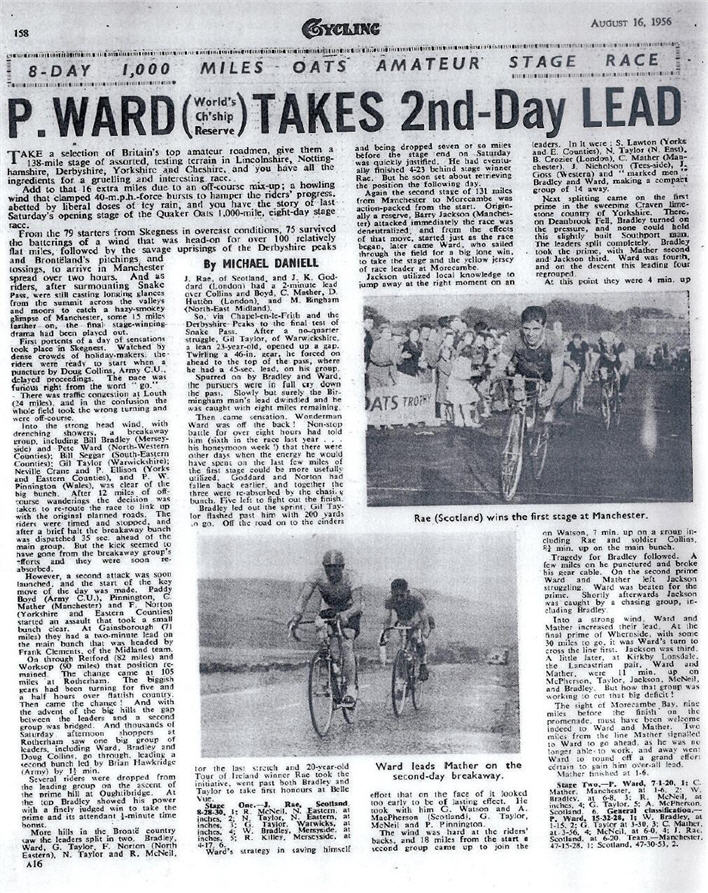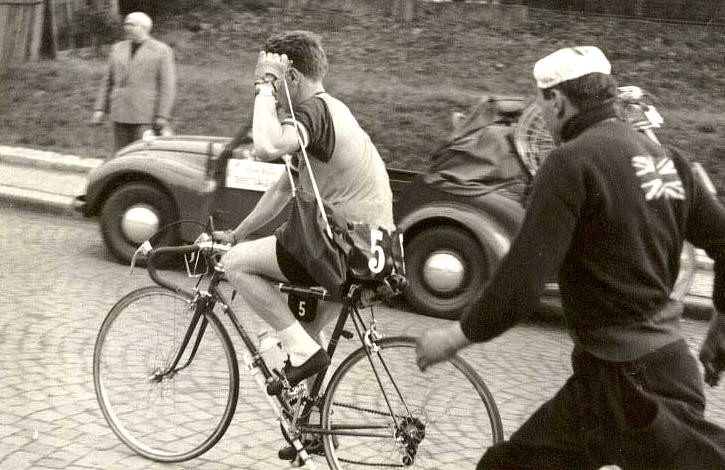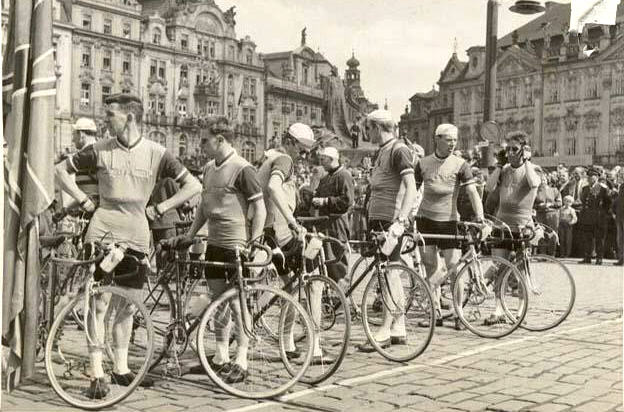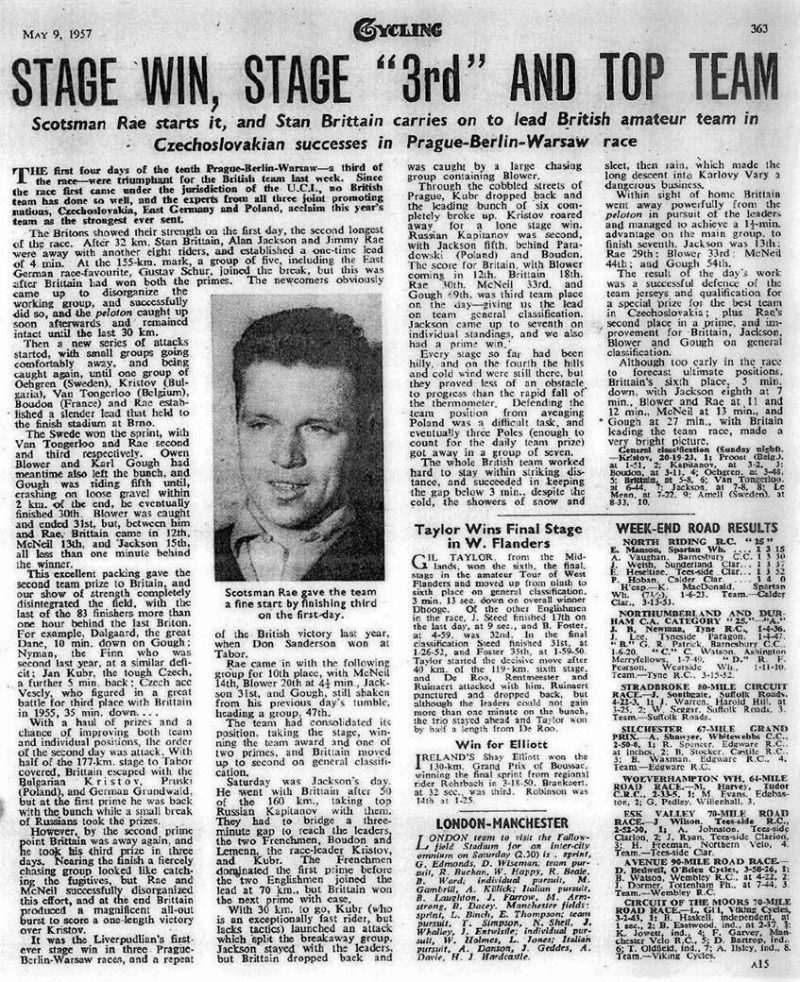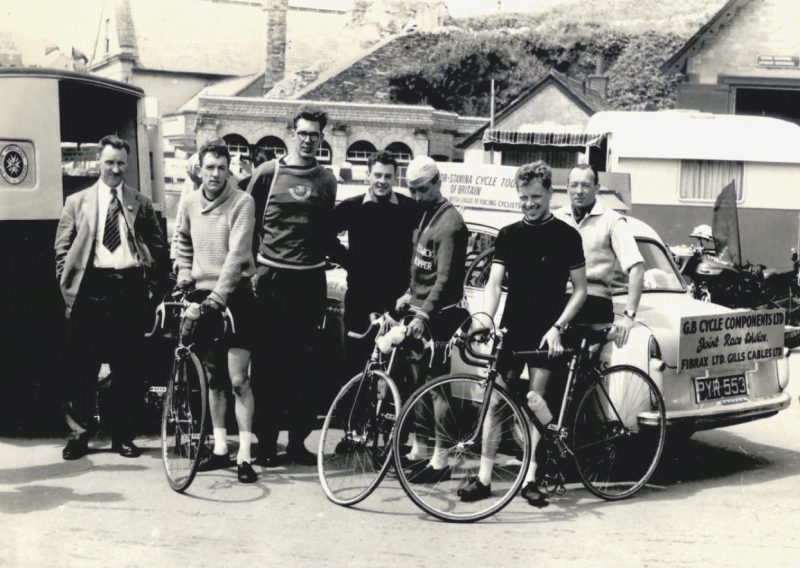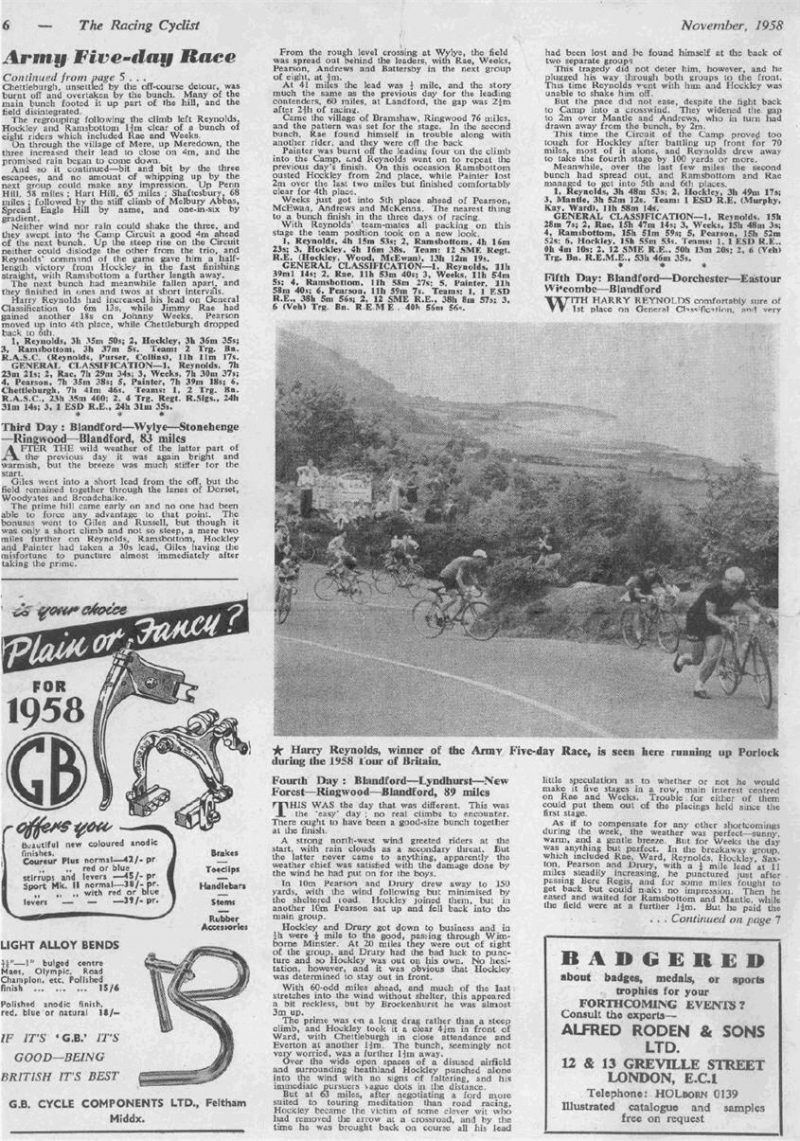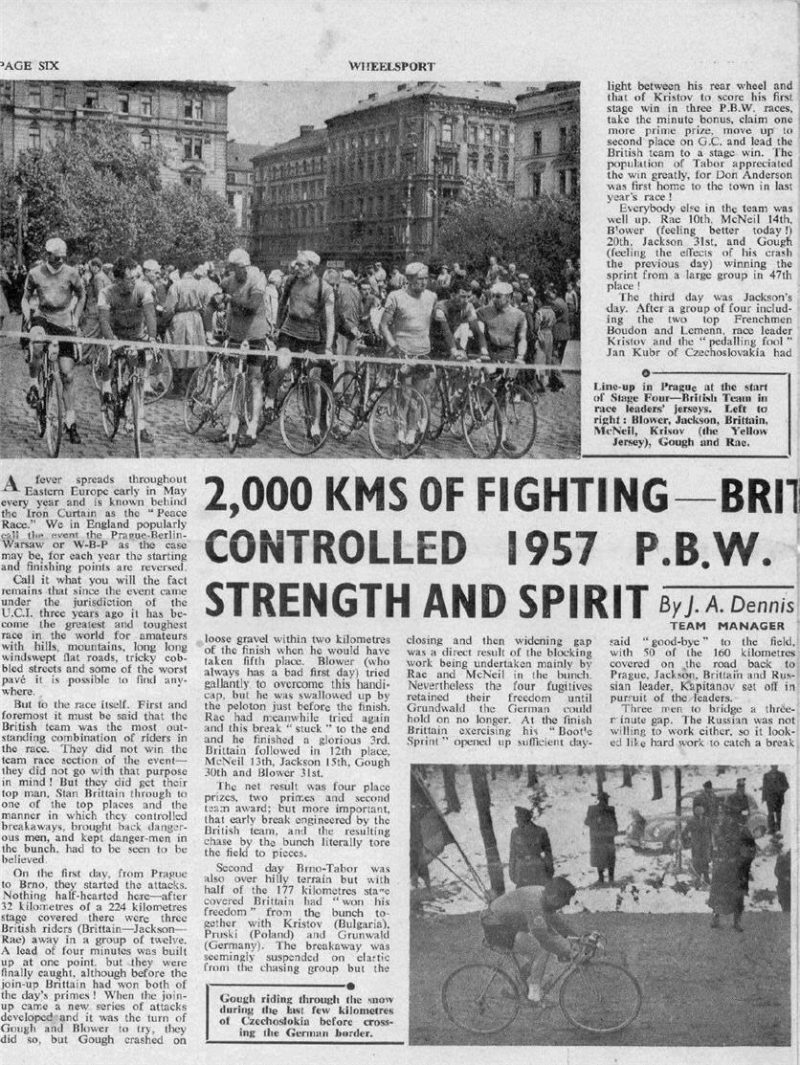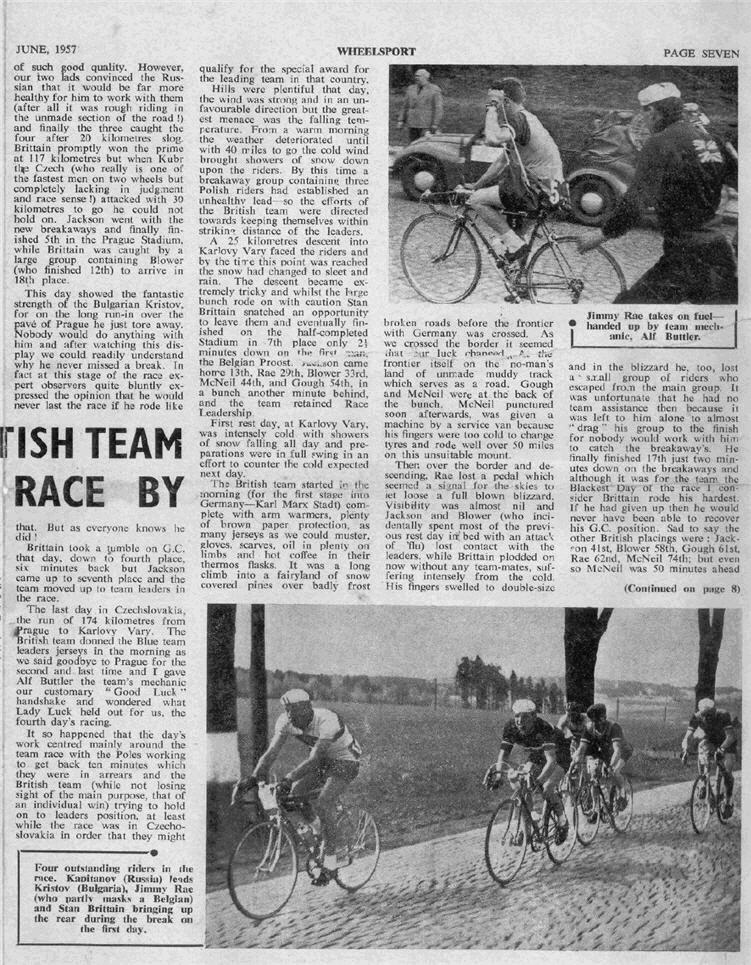‘I cycled from my house in the West End of Glasgow to Larkhall, that would be around 30 miles, rode a 140 mile road race – it went away down over Beattock – won it, then cycled home – so that was around 200 miles for the day.’
Things were different in Jimmy Rae’s day.
VeloVeritas took a run up to Crieff Hydro to interview one of the very few Scots to have won national tours – Mr. James Rae.
Ours neat list of questions went out of the window and we decided it would be best to let Jimmy off the leash, year by year, popping in questions where we could…
“1952: was the year of my first club, the Ivy.”
Who were your heroes?
“Charly Gaul, Stan Ockers – wee guys! I like Gino Bartali, more so than Fausto Coppi.
“1953: I was with the Glasgow Thistle, the Ivy was more into time trials but that wasn’t my thing.
“That year, I rode the Sloan Trophy at Newcastle, got third in it then rode home.”
What about equipment?
“I started with a three speed block then went to four, I rode the Peace Race on a five speed, 14:16:18:20:22 with 47 x 50 chain rings.
“Look at gears now, 11 speed and you have electronic, too. Clipless pedals are also a big advance. I’m not convinced that tyres are any better, though.
“The pros still ride tubulars, I rode Dunlop number 3’s – I rode the whole Peace Race without a puncture on them.
“1956: I was 20 and it was my breakthrough year; I rode the Tour of The Border at Easter and then the Tour of Ireland – which I won. [Check out Tour Racing’s summary of the race.]
“It was eight days; the fields were bigger in Ireland, it was a strong start sheet with the Irish National and the RAF teams riding.
“It was very attacking racing and the race distances were a bit suspect.
“You’d be in the bunch and say to a guy; ‘how far to go? and he’d say; ‘about 25 miles.’ So an hour later you’d say to another guy; ‘how far to go?’ – ‘about an another hour !’ [Reminds me of Willie Gibb! Editor.]
“And then in August it was the Tour of Britain, ‘The Oats’ they called it then; 1,000 miles in eight days. I won stage one, it was a 138 mile stage but we were off course for 16 miles and there was a 40 mph head wind for the first 100 mile.
“My time was 8:28:30 and by the end of stage two there were guys four hours down on GC. I ended up winning the points prize overall.
“That was the year I rode my first big international race, the Circuit of Barcelona.We travelled over land, by train from Paris to Barcelona, it took two days to get there – and I had to pay my own fare to London!”
What about training?
“The races were much longer back them, I remember I cycled from my house in the West End of Glasgow to Larkhall, that would be around 30 miles, rode a 140 mile road race – it went away down over Beattock – and won it, then cycled home – so that was around 200 miles for the day.
“It was all miles based although we’d ride hills hard, in the saddle to build strength. I trained with John Kennedy and the VC Stella, they were big into road racing.
“It was on one of their bikes that I saw a Campag gear mech for the first time.
“In the winter it would be 120 miles on Saturday and Sunday – long hard miles, perhaps round by Crianlarich. We’d ride the way that continental pros still train, two at the front doing their spell then swinging off.
“1957: I rode the Peace Race; stage one was 240 kilometres; there were 12 stages in total and two rest days. And a lot of cobbles, but I believe the year that Steel won it there were 500 kilometres of cobbles.
“Four stages were in Czechoslovakia, four in East Germany and four in Poland. I was third on the first stage, there were 150,000 people in the stadium, the noise nearly knocked me off. I should have ridden the sprint differently; I decided to wait but you have to be at the front, it’s practically impossible to come round someone on a cinder track. I also got a fifth and a tenth on stages.
“It was nothing like the pro races you see on TV with break – control – chase – sprint; it was just attacking all the time.
“You developed what we called ‘rubber neck’ because when you were in the gutter you were always craning your neck to see around the guy in front of you.
“There was one stage out of Krakow – where it was very industrialised with coal mines and steel mills – and the cobbles were just layered in black dirt. The Bulgarian rider Khristov won the overall; one day he just rode Stan Brittain of his wheel, he just couldn’t hold him.
“It was a very hard race but I came out of it in good shape – I actually had to get my national service in the army deffered so I could ride. If you were in the army you couldn’t go behind the Iron Curtain.
“When I came out of the Peace Race I went straight onto 48 hour guard duty with the army – in boots that were too small for me; at the end of it my feet were covered in blisters. I went straight from that to ride at the Isle of Man.
“The army made you or broke you – it was the making of Kenny Laidlaw but there were others it was just too much for. I was lucky, I was under Major Keates, he was a great supporter of cycling and had me as a shorthand typist!”
Who do you admire from the current generation?
“Sastre, Simoni – I identify with the smaller guys who can climb. And I admire Lance Armstrong.
“1958: I won the Tour of Scotland, I was upset that they hadn’t picked me for the Empire Games – I was on the GB short list for the Worlds but couldn’t get a ride for Scotland. I won it to rub it in!
“It was four stages – I think it was Paisley to Dumfries to Dalkeith to Dundee to Glasgow.
“There was an Aussie in the lead but I got away late in a wee group and won it overall.
“I also rode the first Milk Race, that year for the Army team; Ray Booty, Harry Reynolds, Kenny Laidlaw and me. The field was strong, with independents (semi-professionals) riding; guys like Brian Haskell, Ron Coe and Dave Bedwell – all good riders. We were third team on GC.”
What do you think of Scottish cycling now?
“We’ve only had road racing in Scotland for 50 years, before Steel and Greenfield in the 50’s there was nothing, just time trials. I think we have a lot of money coming in – but where does it go, is it to pay for staff?
“There’s no progression now for young riders; before, you could ride for Scotland then aspire to ride for GB. Now the only opportunity to ride for Scotland is in the Commonwealth Games – but that’s only every four years.
“Scotland should have it’s own federation and have teams on the international stage – we have the oldest flag in Europe but it’s never seen in cycling.
“1959: I was demobbed in May of that year and rode three international Tours for GB – Tunisia, Yugoslavia and Poland.
“Tunisia had a good field, with a lot of Italians riding. Yugoslavia was 14 days with 6,000′ climbs, I finished best British rider there. I was best British rider in Poland, too – that was 12 days.
“There was one stage, Gdansk to Warsaw that had 80 kilometres of cobbles.”
Tell us about your pro days, Jimmy.
“In the winter of ’59/60 the late Arthur Campbell approached me about riding the Tour de France for a GB team but told me that I’d have to take out a pro licence. I approached David Rattray (of Flying Scot fame) and he supplied me with bikes and jerseys – but no money!
“1960: So, there I was on a pro licence.
“I moved to Kortrijk in Belgium to be near John Kennedy and I rode a lot of kermesses. I also rode the Tour of Luxembourg – my hero, Charly Gaul was in the field. And at one kermesse, I lined up against Rik Van Looy – that made my year.
“I rode the pro Worlds in the team with Simpson, but didn’t finish.
“The Tour ride turned out to be a farce, they picked the team in December and Norman Sheil got my place. They told John Kennedy three days before that he was riding.
“I rode up to Lille to see the start to talk to the GB guys who were riding; I knew most of them. John lasted six days, but he knew how to ride in the bunches, how to fight to the front.
“If you were placing in the 20’s you could make enough to live on in the kermesses – you got your cheque from the Belgian Federation at the end of the month.
“But of course, after that, as a pro – I couldn’t ride in Scotland.”
Tell us about your veteran racing career.
“Because of the pro licence, I couldn’t ride again in Scotland until I was a vet. As a vet I rode six Tours of Majorca, the Tour of Malta and won races in three Australian states.
“1961: I raced as a pro in England but only for bonuses, you had to win to get those.
“I rode for Ernie Clements Cycles with John Perks, Harry Reynolds and Owen Blower. I rode London-Holyhead but it was hard because you were up against the Viking, Elswick and Falcon teams.
“1962: I was married in Glasgow and the day we came back from honeymoon the air tickets arrived for a job I’d applied for in Bermuda – I was a refrigeration engineer, I made sure I finished my apprenticeship after my national service.
“That was the end of my career as a pro – with the refrigeration I worked in Bermuda for four years then Nigeria, Ghana, Biafra and Kenya.
“And as I said, didn’t come back to the bike until I was a veteran – have you got enough there for an interview?”
Yes, think so, Jim!
With thanks to Stevie Flockhart for the images.


